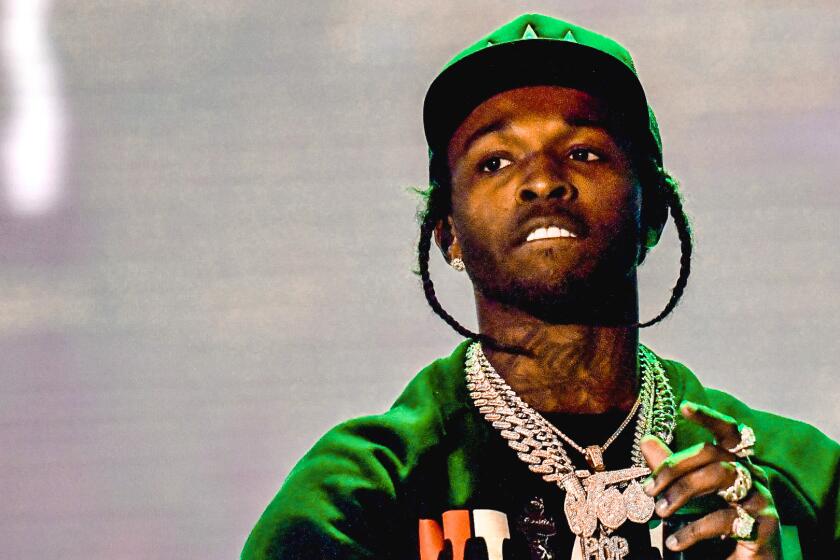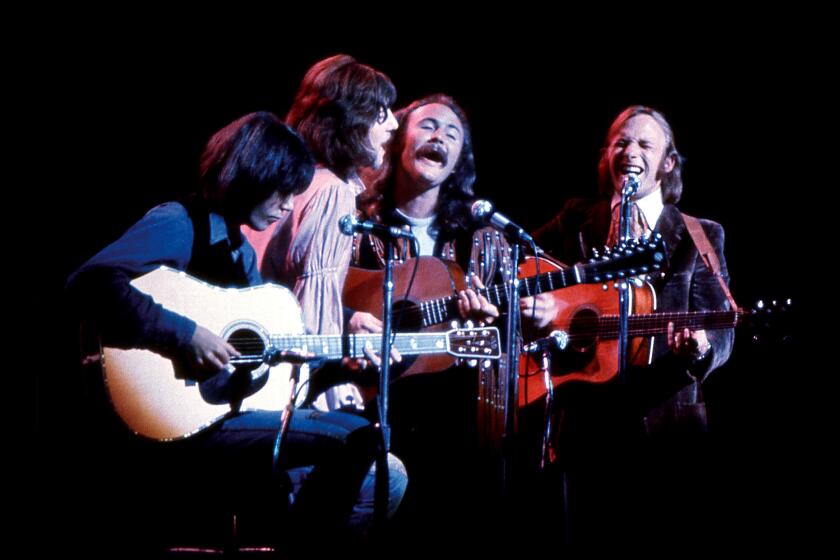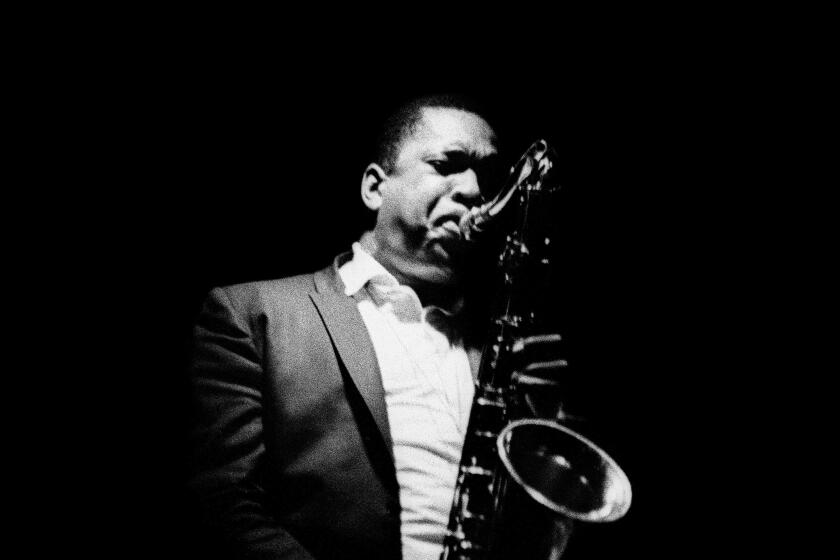A Trio of Worthy Sets by Country Icons in Top Form
- Share via
Any record company that brands its reissues “American Milestones” leaves itself open to charges of shameless self-aggrandizement.
But the new Sony Nashville series with that name largely lives up to that lofty appellation.
A second batch in the series, which was introduced last fall and draws from 80 years of Columbia Records archives, arrives Tuesday and includes Willie Nelson’s watershed 1975 “Red Headed Stranger” album, the celebrated “Johnny Cash at San Quentin” from 1969, George Jones’ 1980 return-to-form “I Am What I Am” album, and new compilations surveying the careers of country’s pioneering Carter Family and ‘50s honky-tonker Johnny Horton.
The re-releases are all expanded versions of the original albums with significant songs being issued for the first time, as well as often revealing new liner notes. They don’t necessarily improve what already were exceptional works, but they give fans extra incentive to pick up the new versions.
*
**** Willie Nelson, “Red Headed Stranger,” Columbia/Legacy. “Red Headed Stranger” isn’t significant merely because it gave the country maverick his first No. 1 hit as a recording artist (“Blue Eyes Crying in the Rain”) or because it was his first to crack Billboard’s pop album chart.
This was the album that established Nelson in mainstream eyes (both country and pop) as one of country’s greatest singer-songwriters and turned him into a pop icon. Its surprise success also helped launch the Austin, Texas-based outlaw country movement of the mid-’70s and gave a sobering slap in the face to the Nashville country establishment and the formulaic music it was churning out.
Nelson had made a name for himself as a songwriter in the early ‘60s with songs recorded by such country giants as Patsy Cline, Faron Young and Ray Price.
But Nashville didn’t know what to do with Nelson himself, probably because his music was influenced as much by Cole Porter as Hank Williams. Although he recorded dozens of sides during the ‘60s, he charted just two Top 10 country hits between 1962 and 1975, when he was signed by Columbia.
“Red Headed Stranger,” his Columbia debut, was an odd duck by Nashville standards and, in a new essay with the reissue, Chet Flippo notes that Bruce Lundvall, then head of Columbia, didn’t know quite how to react when Nelson delivered this quasi-autobiographical, allegorical theme album. It was set in the Old West and was about a mysterious redheaded stranger whose arrival uproots several lives. To his credit, Lundvall decided to issue it as Nelson had recorded it.
In both form and content, “Stranger” was a radical departure from the ultra-conventional records by Donna Fargo, Ronnie Milsap, Conway Twitty and others who were topping the country charts in the early ‘70s.
Nelson acted as both narrator and protagonist of an epic fable in which storytelling and in-the-moment emotion took precedence over tried-and-true hooks and standard verse-chorus song structure.
The instrumentation was spare, often just Nelson and his guitar, sometimes with dashes of piano or bass and drums. Nelson recorded the whole thing in a day and a half, at a cost of less than $20,000.
The album and subsequent efforts out of Texas by Nelson and his pal Waylon Jennings helped open a door between country and rock audiences, and spurred Nashville to wipe some of the sleep from its eyes.
Twenty-five years later, it remains a haunting, intensely personal work.
The bonus tracks on the CD include a beautifully stripped-down reading of Hank Williams’ “I Can’t Help It (If I’m Still in Love With You),” a nod to Bob Wills with “A Maiden’s Prayer” and a bouncy closing rendition of Pee Wee King’s 1950 hit “Bonaparte’s Retreat.”
*
**** Johnny Cash, “Johnny Cash at San Quentin,” Columbia/Legacy. At last we get the full concert Cash gave 31 years ago before a throng of boisterous inmates at California’s maximum security prison.
It’s nearly double the length of the original LP and includes eight previously unreleased tracks, among them live versions of some of his ‘50s Sun Records material such as “Big River” and the heartbreaking “I Still Miss Someone.” It also has the uncensored version of his pop hit “A Boy Named Sue,” (bleeped 31 years ago for including the phrase “son of a bitch”).
Thanks in part to the success of that single, this was the only Cash album to hit No. 1 on Billboard’s pop album chart, where it stayed for four weeks in 1969.
His empathy with the inmates is palpable--throughout his career he has focused equally on sin and salvation--and at one point after singing his just-composed song condemning the prison system, “San Quentin,” he wonders aloud whether he’s just shot his chance of getting a glass of water from any of the guards standing by.
There’s a terrific new Q&A; in the liner notes between Marty Stuart and Merle Haggard, who was in the audience--as an inmate, not as a musician--in 1958 when Cash did his first performance at San Quentin. It offers Haggard’s testimony to just how strong an impact the Man in Black made on the ultimate captive audience.
*
*** 1/2 George Jones. “I Am What I Am,” Epic/Legacy. Jones’ recordings in the ‘70s had been wildly inconsistent. But fresh from a rehab center in 1980, he recorded this standout album that yielded “He Stopped Loving Her Today” plus the autobiographical-sounding “If Drinking Don’t Kill Me (Her Memory Will)” and “I’ve Aged Twenty Years in Five.” Some of the up-tempo numbers are forgettable, but in the ballads Jones hit a peak he didn’t reach again until 1999’s Grammy-winning “Cold Hard Truth” album.
More to Read
The biggest entertainment stories
Get our big stories about Hollywood, film, television, music, arts, culture and more right in your inbox as soon as they publish.
You may occasionally receive promotional content from the Los Angeles Times.










